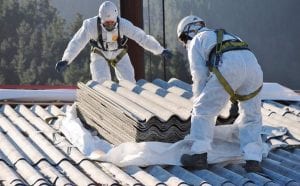 September 26th is Mesothelioma Awareness Day. The rare and aggressive cancer linked with exposure to asbestos.
September 26th is Mesothelioma Awareness Day. The rare and aggressive cancer linked with exposure to asbestos.
Companies were aware of the deadly risks of asbestos for decades before any action was taken, and there is damning evidence to prove that many of them covered up the scientific community’s warnings about the risks. Instead continuing to manufacture and supply asbestos across a range of construction and fabrication industries, without making workers or consumers aware of the risks. It wasn’t until the 1970’s that asbestos was classified as a hazardous air pollutant.
Today, Russia produces most of the world’s asbestos, closely followed by China, who produce about 200 tonne annually. While India, one of the world’s largest consumers, blocked it’s listing as a hazardous substance within the Rotterdam Convention. One in six countries to do so.
Asbestos is still used globally in construction and manufacturing and can be found in cement, car parts, floor tiles and roofing materials. It was even recently discovered in the ‘shimmer’ products of a make-up line for young girls.
Chrysotile is the only form still in use, and though some make the argument that this form of asbestos is safe, Chrysotile asbestos accounts for 95 per cent of the asbestos mined and used by humans historically. No matter what President Trump thinks, there is no safe asbestos.
There has been something of a decline in the global asbestos industry since the 1980’s. However, the material is still highly prevalent despite the history of debilitating illnesses connected with it. You don’t have to look hard to find asbestos in your neighborhood.
The World Health Organization recognizes asbestos as one of the leading occupational carcinogens, and includes chrysotile forms on its list of hazardous substances.
The cancer-causing fibers can only be seen under a microscope, and millions can be inhaled over a brief period. The longer a person breathes the deadly particle, the more severe the consequences.
In most cases, a diagnosis comes hand in hand with a prognosis of six months to a year before the disease proves lethal, and there are limited available treatments for this aggressive form of cancer. Though recent breakthroughs have given some hope that a cure may eventually be found.
There is also hope through other avenues. Strong public interest in drawing attention to the issue, and the lobbying power that successful cases can provide, mean victims can find help from advocates, and often a mesothelia lawyer who will waive their fees if the proceedings are unsuccessful. Many victims and their families feel the only option left for them to see justice served is through the courts. Although this is becoming more and more difficult, especially in the US where pro-asbestos lobbyists are working to change legislation to make it harder for victims to hold them accountable for damages. Even when cases do make it to court, litigation is a costly and time-consuming procedure.
Despite the overwhelming evidence that asbestos is a silent killer, and even limited exposure puts a person at risk, a world-wide ban has not been implemented.
Australia banned all products containing asbestos in 2003, but as recently as this year, tradesmen have admitted to difficulties identifying the substance to ensure its safe removal. While Australian Border Force officials found that the toxic substance during routine testing, despite imports of the substance being banned in the country for a decade. with the tainted materials used in the construction of a children’s hospital as well as a government building.
Canada’s last asbestos mines closed in 2011, and in 2016 the government finally imposed a ban on the substance. But as many as 4000 people die each year from mesothelioma or other respiratory conditions linked to asbestos exposure.
In the United Kingdom, asbestos was also placed onto the hazardous materials list and all importing and exporting ceased. In the United Kingdom, thirteen people die every day from exposure to asbestos.
Just this year mesothelioma took the life of Australian journalist, Trevor Grant, who had contracted the diseases simply by working in office buildings constructed with the material. In the US, 15,000 people die from asbestos related illnesses yearly. WHO estimates about 125 million workers are exposed to asbestos every year.
How is it that a substance with such an incriminating history continues to avoid classification as harmful? There have been recent reports that corporations hired private intelligence firms and used espionage to try to influence the asbestos debate at the UN Rotterdam Convention in April this year, meaning the discussion won’t come up again until the Conventions ninth meeting, at least another two years. A chilling prospect considering it often takes between forty and sixty years for the symptoms of mesothelioma to present itself.
If parts of the world continue to produce materials made with asbestos, the substance will continue to be used in the construction of schools, the paneling of apartment buildings and the roofs of hospitals. Without a full ban, the death toll will rise. Some experts predict we won’t see the peak of the disease until 2020.
So far 54 countries have committed to being asbestos free by then, but there is still a long way to go. Continuing to raise awareness about the dangers of all asbestos, including chrysotile is imperative if we plan to win the fight against this deadly killer.
If you would like to contribute an article or contact our contributors, you can get in touch here
